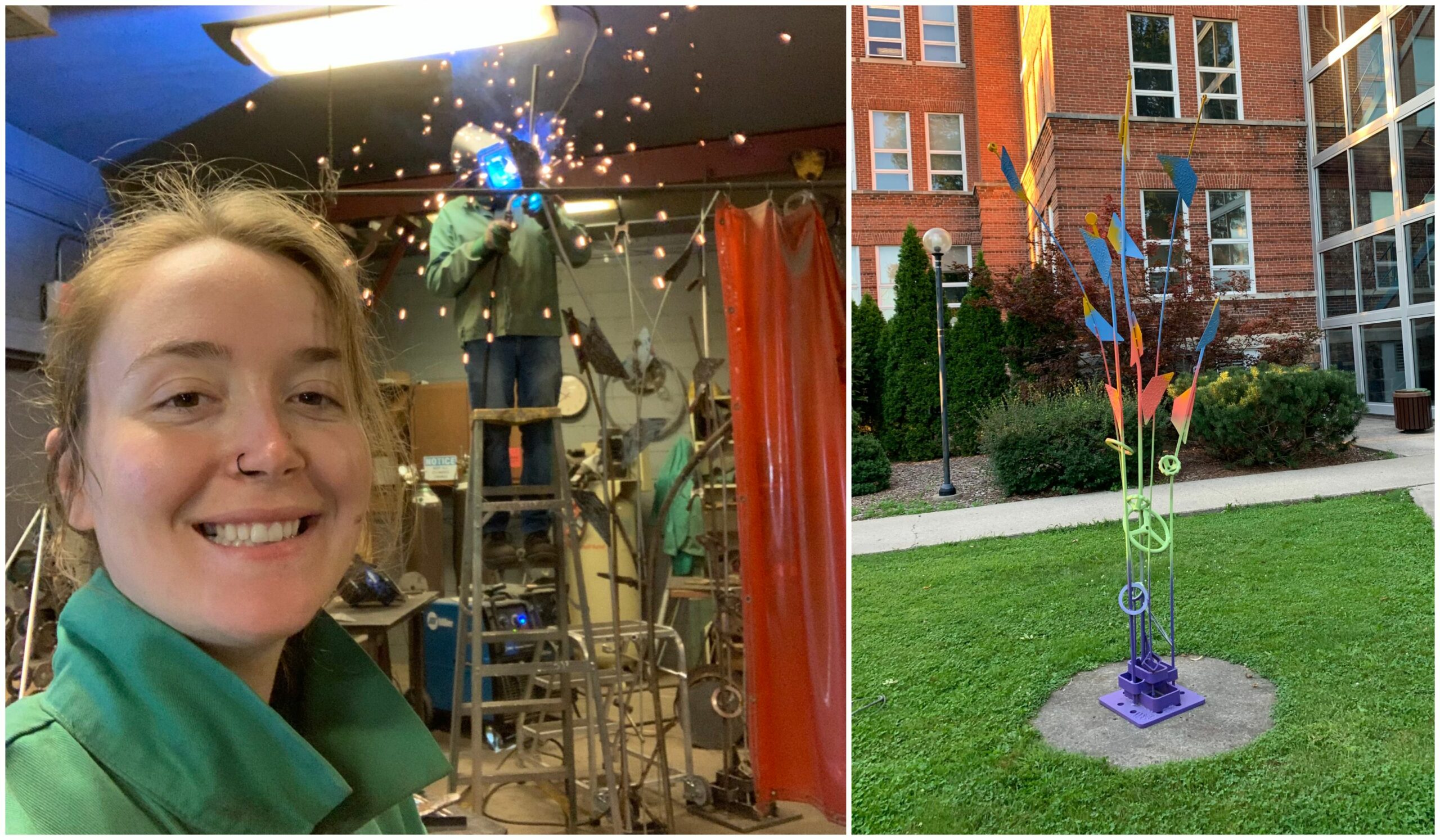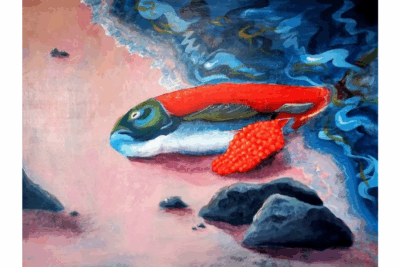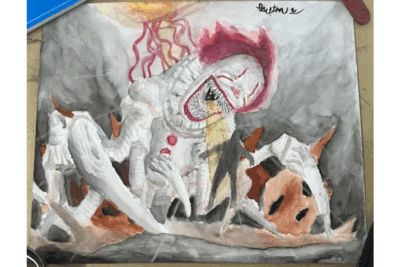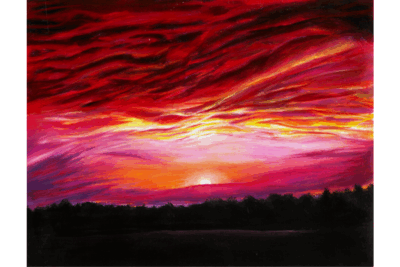This past summer, Heather Gabel, a sustainable food systems and art double major, worked to bring her fields of study together through the Hickory Scholars program, an eight-week experience where students work with professors to conduct research related to Merry Lea Environmental Center’s mission of sustainability.
Gabel worked with John Mishler, art gallery director and sculptor, and John Mischler, assistant professor of sustainability and environmental education to create two vibrant sculptures.After researching many topics including the role of art in sustainability efforts as well as welding techniques, she started brainstorming and designing for her own pieces, one of which has been installed on the Goshen College campus outside of the art building, and the other which will be located in Reith Village at Merry Lea as a bridge between the two campuses.
“Often Merry Lea feels separate from GC and having a sculpture both places would bring it closer to the GC campus,” Mishler said. “One idea is that if people saw the sculpture on the GC campus they would want to go to Merry Lea to see the other sculpture and vice versa.”
Through this project, Gabel was able to further hone her welding skills. She had to consider factors like the sculptures’ physical stability and visual appeal, which presented a few challenges.
“These are my largest sculptures, so far, so I needed to have some pieces that would support the height,” she said.
Gabel also needed to arrange the components with an outdoor location and public audience in mind.
“It was fun to think through all these different problems as they came up, and they made my sculpture better,” she said.
The sculptures are created from found objects that have been welded together and painted. The materials came from a combination of the metal scrapyard in Goshen and an old farm dump site at Merry Lea.
The sculpture on campus features a number of round objects like wheels, handles and gears, while its sister sculpture includes several wrenches and a big hook at the bottom.
There is far more to the process than creating a sturdy and interesting set of sculptures, though.
Gabel was intentional about what message she wanted her sculptures to send, but welcomes everyone to interpret it as they will.
“Of course, you can see whatever you want to see when you look at them, and that’s part of the fun,” she said.
The structure of the statues was inspired by prairie grasses and their natural attributes.
“We need our food system to be resilient as we’re going through climate change and political change,” Gabel said. “As I was thinking about this idea of resiliency, I thought of prairie grasses and flowers and these plants that can withstand fire, grow deep roots, and that are beautiful.”
Both Merry Lea and Goshen College’s campus have plots of restored prairie ecosystems, and that’s another way that Gabel found to connect the two locations through these sculptures.
Goshen College’s campus has installed their sculpture, but Merry Lea is still waiting on the administration to finalize the plan for the installation of their piece. Gabel anxiously awaits the completion of the project.
“It’s just out in public, it’s not inside an art gallery where you can choose whether you want to go in there or not, which adds a whole other layer,” Gabel said. “Now it’s just waiting and making sure everybody is happy.”




